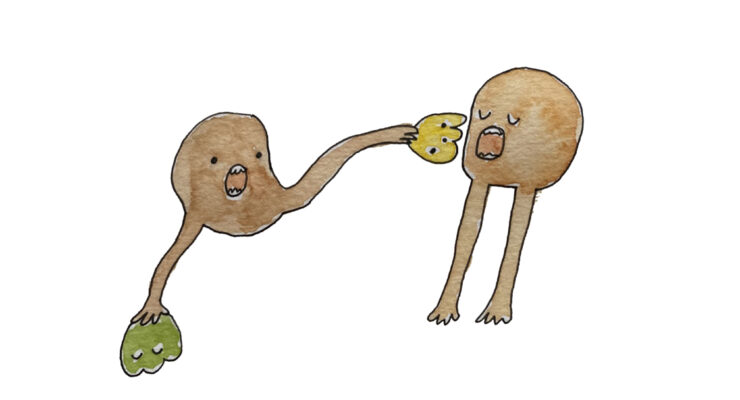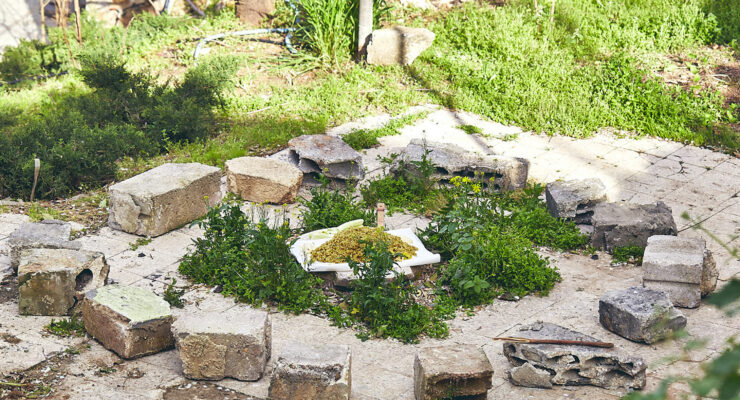Edible Futures on Tour
Kamiel Vorwerk is the exhibition-designer of ‘Edible Futures’, a travelling exhibition curated by the Dutch Institute of Food & Design and presented by the Embassy of the Kingdom of the Netherlands. It asks visitors to imagine what the future of food will look like, and what role each of us might play in changing it. The DIFD asked Kamiel about how being a designer who activates and transforms spaces helps people imagine and think about different futures in food.
You are a designer who specialises in the “activation and transformation of public space”, how did you come to choose such a field and in particular generate so many interaction spaces and exhibitions related to food?
It’s actually quite simple. I’ve always been interested in my surroundings, in public space and how people act within these environments. This is why I chose to study at the Design Academy Eindhoven in the Man and Public Space department – I basically let my interests guide me.
A huge part of the earth’s landscape is shaped through the production of our food. Through the food we eat we literally transform our surroundings. For example, if we all stopped eating meat or stopped drinking wine, our landscapes would look totally different. Agri-design and food design are therefore also literally about designing landscapes. This is the reason why I’m so interested in designing exhibitions or projects about food design. Good examples of this are the projects ‘Agri meets Design’ (Dutch Design Week 2020), ‘We Feed The Planet’ (World Expo Milan 2015) and ‘Edible Futures’ (Canada, 2019-2020).


Human Hyena by Paul Gong (left), Tempeh-ware by Mediamatic (right)
“Even in these complicated times, I am in favour of physical exhibitions.”
Food design is a young field, exhibiting and communicating this field to the public is even more recent. What solutions did you come up with for the ‘Edible Futures’ exhibition – particularly bearing in mind that food design projects often tend to be quite conceptual – to help the public understand a subject they may never have heard of before?
This was indeed challenging. The ‘Edible Futures’ exhibition was more or less based on the idea behind ‘Embassy of Food’ (presented by the DIFD at the DDW 2018). Marije Vogelzang came up with the concept of guiding the visitors through an audio tour. The audio tour told an overlaying story in which the individual exhibits played the role of examples and illustrations. This helped visitors to understand and experience possible futures of our food.
Totomoxtle by Fernando Laposse

S/Zout by Studio H

The ‘Edible Futures’ exhibition was designed to travel to three different locations in Canada: the Canada Agriculture and Foods Museum in Ottawa, the Interior Design Show (IDS) in Vancouver and the IDS in Toronto. Nearly all the exhibits had to be sent there from Europe and you yourself hail from the Netherlands. How do you design an exhibition in as sustainable and economical a way as possible from a distance for so many eventualities? Is a modular format the answer?
To be honest, this project was quite difficult for many reasons: we had a tight budget, the projects had to be sent from many places and at every location we had a different floor plan and a different project line-up. So, yes, the modular format was the answer. We designed both the physical exhibition and the audio tour as separate units. This made it possible to puzzle with all the individual parts.


Toronto (left), Vancouver (right)
What did you learn from the experience and how do you think such exhibitions can be made more sustainable – or generate less waste in the future?
At the end everything worked out quite well but if I ever designed an exhibition like this again, there is one mayor thing I would do differently. I would start with a completely finished and tested exhibition so that all the exhibits, furniture, signage, lighting and technical equipment are in one package. You probably think that this would cost a lot more but I can assure you that, on the contrary, it would have saved us a lot of time and discussions as well as printing, material and lighting rental costs.


Ottowa (left), Toronto (right)
This show finished touring in Canada just before Covid-19 hit. Many exhibitions and shows have been cancelled since – including the Dutch Design Week 2020. If you were designing such an exhibition now, you would most likely be trying to make it something that could be experienced as well digitally as in a physical space. How, in your view, can food design especially – which relies so much on sensory experiences such as smell, feel and taste – adapt to the challenges of exhibiting under pandemic restrictions?
Even in these complicated times, I am in favour of physical exhibitions. Of course, social distancing must be taken into account. However, I believe that this is perfectly possible if there is a clear routing and reservation system with time slots.
Marije Vogelzang, founder of The DIFD and curator and concept designer of the exhibition, adds a footnote about her experience with producing ‘Edible Futures’ alongside Kamiel:
The ‘Edible Futures’ exhibition was made to immerse visitors in an experience where they could explore exciting future-oriented designs and also engage in role play. Visitors were asked if they wanted to ‘be’ a consumer or a producer and from that perspective they heard stories about how life would be if the speculative design on display were reality. This helped visitors to shift their everyday perspectives and to feel they were part of the future of food. This is an important issue, many people do not feel involved in the future of food. They expect this future to be shaped by corporations, governments and institutions, but everything all of us do affects the future. We are as much part of the future as when we look back to see that we are a result of the past. In this exhibition I wanted the visitor to feel inspired and engaged.
Working together with Kamiel to create a simple, yet effective, experience was a very positive collaboration. I always know, when working with Kamiel, that things will work out and that he takes care of the details I find so important. Like the fact that we made little flyers for all visitors to use either as a ‘grocery list’ or an ‘investment list’ when they chose their preferred projects. Interestingly enough, the preferred projects outcome, which visitors chose by marking a large poster with coloured stickers, was notably different depending on whether they had assumed the perspective of consumer or producer – even though they had seen the same projects. This shows the importance of challenging our mindsets and beliefs. I think that food and design plays a huge role in that.
_
The ‘Edible Futures’ exhibition was on show in Ottowa, Vancouver and Toronto from 2019-2020.















